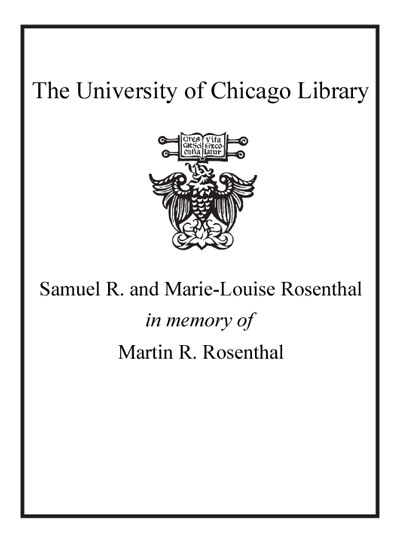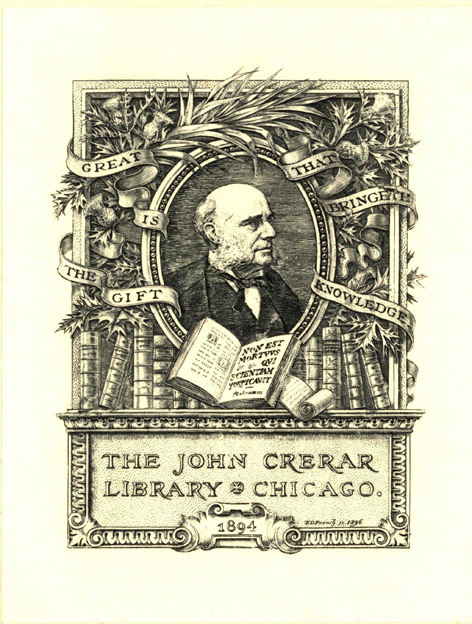The handbook of brain theory and neural networks /
Saved in:
| Edition: | 2nd ed. |
|---|---|
| Imprint: | Cambridge, Mass. : MIT Press, c2003. |
| Description: | xvii, 1290 p. : ill. ; 29 cm. |
| Language: | English |
| Subject: | |
| Format: | Print Book |
| URL for this record: | http://pi.lib.uchicago.edu/1001/cat/bib/4785279 |
Table of Contents:
- Pt. I. Background: The Elements of Brain Theory and Neural Networks
- Introducing the Neuron
- Levels and Styles of Analysis
- Dynamics and Adaptation in Neural Networks
- Pt. II. Road Maps: A Guided Tour of Brain Theory and Neural Networks
- The Meta-Map
- Grounding Models of Neurons and Networks
- Brain, Behavior, and Cognition
- Psychology, Linguistics, and Artificial Intelligence
- Biological Neurons and Networks
- Dynamics and Learning in Artificial Networks
- Sensory Systems
- Motor Systems
- Applications, Implementations, and Analysis
- Pt. III. Articles
- Action Monitoring and Forward Control of Movements
- Activity-Dependent Regulation of Neuronal Conductances
- Adaptive Resonance Theory
- Adaptive Spike Coding
- Amplification, Attenuation, and Integration
- Analog Neural Nets: Computational Power
- Analog VLSI Implementations of Neural Networks
- Analogy-Based Reasoning and Metaphor
- Arm and Hand Movement Control
- Artificial Intelligence and Neural Networks
- Associative Networks
- Auditory Cortex
- Auditory Periphery and Cochlear Nucleus
- Auditory Scene Analysis
- Axonal Modeling
- Axonal Path Finding
- Backpropagation: General Principles
- Basal Ganglia
- Bayesian Methods and Neural Networks
- Bayesian Networks
- Biologically Inspired Robotics
- Biophysical Mechanisms of Neuronal Modeling
- Biophysical Mosaic of the Neuron
- Brain Signal Analysis
- Brain-Computer Interfaces
- Canonical Neural Models
- Cerebellum and Conditioning
- Cerebellum and Motor Control
- Cerebellum: Neural Plasticity
- Chains of Oscillators in Motor and Sensory Systems
- Chaos in Biological Systems
- Chaos in Neural Systems
- Cognitive Development
- Cognitive Maps
- Cognitive Modeling: Psychology and Connectionism
- Collective Behavior of Coupled Oscillators
- Collicular Visuomotor Transformations for Gaze Control
- Color Perception
- Command Neurons and Command Systems
- Competitive Learning
- Competitive Queuing for Planning and Serial Performance
- Compositionality in Neural Systems
- Computing with Attractors
- Concept Learning
- Conditioning
- Connectionist and Symbolic Representations
- Consciousness, Neural Models of
- Constituency and Recursion in Language
- Contour and Surface Perception
- Convolutional Networks for Images, Speech, and Time Series
- Cooperative Phenomena
- Cortical Hebbian Modules
- Cortical Memory
- Cortical Population Dynamics and Psychophysics
- Covariance Structural Equation Modeling
- Crustacean Stomatogastric System
- Data Clustering and Learning
- Databases for Neuroscience
- Decision Support Systems and Expert Systems
- Dendritic Learning
- Dendritic Processing
- Dendritic Spines
- Development of Retinotectal Maps
- Developmental Disorders
- Diffusion Models of Neuron Activity
- Digital VLSI for Neural Networks
- Directional Selectivity
- Dissociations Between Visual Processing Modes
- Dopamine, Roles of
- Dynamic Link Architecture
- Dynamic Remapping
- Dynamics of Bifurcation in Neural Nets
- Dynamics of Association and Recall
- Echolocation: Cochleotopic and Computational Maps
- EEG and MEG Analysis
- Electrolocation
- Embodied Cognition
- Emotional Circuits
- Energy Functionals for Neural Networks
- Ensemble Learning
- Equilibrium Point Hypothesis
- Event-Related Potentials
- Evolution and Learning in Neural Networks
- Evolution of Artificial Neural Networks
- Evolution of Genetic Networks
- Evolution of the Ancestral Vertebrate Brain
- Eye-Hand Coordination in Reaching Movements
- Face Recognition: Neurophysiology and Neural Technology
- Face Recognition: Psychology and Connectionism
- Fast Visual Processing
- Feature Analysis
- Filtering, Adaptive
- Forecasting
- Gabor Wavelets and Statistical Pattern Recognition
- Gait Transitions
- Gaussian Processes
- Generalization and Regularization in Nonlinear Learning Systems
- GENESIS Simulation System
- Geometrical Principles in Motor Control
- Global Visual Pattern Extraction
- Graphical Models: Parameter Learning
- Graphical Models: Probabilistic Inference
- Graphical Models: Structure Learning
- Grasping Movements: Visuomotor Transformations
- Habituation
- Half-Center Oscillators Underlying Rhythmic Movements
- Hebbian Learning and Neuronal Regulation
- Hebbian Synaptic Plasticity
- Helmholtz Machines and Sleep-Wake Learning
- Hemispheric Interactions and Specialization
- Hidden Markov Models
- Hippocampal Rhythm Generation
- Hippocampus: Spatial Models
- Hybrid Connectionist/Symbolic Systems
- Identification and Control
- Imaging the Grammatical Brain
- Imaging the Motor Brain
- Imaging the Visual Brain
- Imitation
- Independent Component Analysis
- Information Theory and Visual Plasticity
- Integrate-and-Fire Neurons and Networks
- Invertebrate Models of Learning: Aplysia and Hermissenda
- Ion Channels: Keys to Neuronal Specialization
- Kalman Filtering: Neural Implications
- Laminar Cortical Architecture in Visual Perception
- Language Acquisition
- Language Evolution and Change
- Language Evolution: The Mirror System Hypothesis
- Language Processing
- Layered Computation in Neural Networks
- Learning and Generalization: Theoretical Bounds
- Learning and Statistical Inference
- Learning Network Topology
- Learning Vector Quantization
- Lesioned Networks as Models of Neuropsychological Deficits
- Limb Geometry, Neural Control
- Localized Versus Distributed Representations
- Locomotion, Invertebrate
- Locomotion, Vertebrate
- Locust Flight: Components and Mechanisms in the Motor
- Markov Random Field Models in Image Processing
- Memory-Based Reasoning
- Minimum Description Length Analysis
- Model Validation
- Modular and Hierarchical Learning Systems
- Motion Perception: Elementary Mechanisms
- Motion Perception: Navigation
- Motivation
- Motoneuron Recruitment
- Motor Control, Biological and Theoretical
- Motor Cortex: Coding and Decoding of Directional Operations
- Motor Pattern Generation
- Motor Primitives
- Motor Theories of Perception
- Multiagent Systems
- Muscle Models
- Neocognitron: A Model for Visual Pattern Recognition
- Neocortex: Basic Neuron Types
- Neocortex: Chemical and Electrical Synapses
- Neural Automata and Analog Computational Complexity
- Neuroanatomy in a Computational Perspective
- Neuroethology, Computational
- Neuroinformatics
- Neurolinguistics
- Neurological and Psychiatric Disorders
- Neuromanifolds and Information Geometry
- Neuromodulation in Invertebrate Nervous Systems
- Neuromodulation in Mammalian Nervous Systems
- Neuromorphic VLSI Circuits and Systems
- NEURON Simulation Environment
- Neuropsychological Impairments
- Neurosimulation: Tools and Resources
- NMDA Receptors: Synaptic, Cellular, and Network Models
- NSL Neural Simulation Language
- Object Recognition
- Object Recognition, Neurophysiology
- Object Structure, Visual Processing
- Ocular Dominance and Orientation Columns
- Olfactory Bulb
- Olfactory Cortex
- Optimal Sensory Encoding
- Optimality Theory in Linguistics
- Optimization, Neural
- Optimization Principles in Motor Control
- Orientation Selectivity
- Oscillatory and Bursting Properties of Neurons
- PAC Learning and Neural Networks
- Pain Networks
- Past Tense Learning
- Pattern Formation, Biological
- Pattern Formation, Neural
- Pattern Recognition
- Perception of Three-Dimensional Structure
- Perceptrons, Adalines, and Backpropagation
- Perspective on Neuron Model Complexity
- Phase-Plane Analysis of Neural Nets
- Philosophical Issues in Brain Theory and Connectionism
- Photonic Implementations of Neurobiologically Inspired Networks
- Population Codes
- Post-Hebbian Learning Algorithms
- Potential Fields and Neural Networks
- Prefrontal Cortex in Temporal Organization of Action
- Principal Component Analysis
- Probabilistic Regularization Methods for Low-Level Vision
- Programmable Neurocomputing Systems
- Prosthetics, Motor Control
- Prosthetics, Neural
- Prosthetics, Sensory Systems
- Pursuit Eye Movements
- Q-Learning for Robots
- Radial Basis Function Networks
- Rate Coding and Signal Processing
- Reaching Movements: Implications for Computational Models
- Reactive Robotic Systems
- Reading
- Recurrent Networks: Learning Algorithms
- Recurrent Networks: Neurophysiological Modeling
- Reinforcement Learning
- Reinforcement Learning in Motor Control
- Respiratory Rhythm Generation
- Retina
- Robot Arm Control
- Robot Learning
- Robot Navigation
- Rodent Head Direction System
- Schema Theory
- Scratch Reflex
- Self-Organization and the Brain
- Self-Organizing Feature Maps
- Semantic Networks
- Sensor Fusion
- Sensorimotor Interactions and Central Pattern Generators
- Sensorimotor Learning
- Sensory Coding and Information Transmission
- Sequence Learning
- Short-Term Memory
- Silicon Neurons
- Simulated Annealing and Boltzmann Machines
- Single-Cell Models
- Sleep Oscillations
- Somatosensory System
- Somatotopy: Plasticity of Sensory Maps
- Sound Localization and Binaural Processing
- Sparse Coding in the Primate Cortex
- Speech Processing: Psycholinguistics
- Speech Production
- Speech Recognition Technology
- Spiking Neurons, Computation with
- Spinal Cord of Lamprey: Generation of Locomotor Patterns
- Statistical Mechanics of Generalization
- Statistical Mechanics of Neural Networks
- Statistical Mechanics of On-line Learning and Generalization
- Statistical Parametric Mapping of Cortical Activity Patterns
- Stereo Correspondence
- Stochastic Approximation and Efficient Learning
- Stochastic Resonance
- Structured Connectionist Models
- Support Vector Machines
- Synaptic Interactions
- Synaptic Noise and Chaos in Vertebrate Neurons
- Synaptic Transmission
- Synchronization, Binding and Expectancy
- Synfire Chains
- Synthetic Functional Brain Mapping
- Systematicity and Generalizations in Connectionist Networks
- Temporal Dynamics of Biological Synapses
- Temporal Integration in Recurrent Microcircuits
- Temporal Pattern Processing
- Temporal Sequences: Learning and Global Analysis
- Tensor Voting and Visual Segmentation
- Thalamus
- Universal Approximators
- Unsupervised Learning with Global Objective Functions
- Vapnik-Chervonenkis Dimension of Neural Networks
- Vestibulo-Ocular Reflex
- Visual Attention
- Visual Cortex: Anatomical Structure and Models of Function
- Visual Course Control in Flies
- Visual Scene Perception, Neurophysiology
- Visual Scene Segmentation
- Visuomotor Coordination in Frog and Toad
- Visuomotor Coordination in Salamander
- Winner-Take-All Networks
- Ying-Yang Learning.


